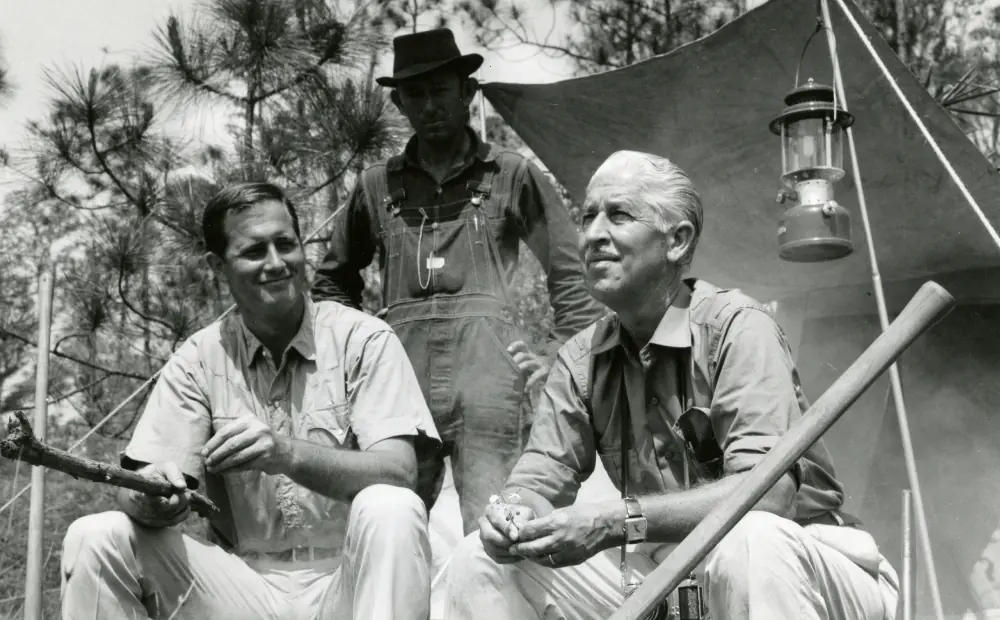0:04
Today we are exploring Georgia Aquarium in downtown Atlanta to learn about beluga whales.
0:10
Witnessing their grace and curiosity as they swim through the aquarium's 800,000 gallon habitat is breathtaking.
0:19
Beluga whales were once considered threatened, but today, thanks to tireless conservation work, most populations around the world are stable.
0:27
All right, we're going to head out to our session to learn about beluga conservation.
0:32
We went behind the scenes with associate curator Katie Flammer.
0:36
Katie and the Georgia Aquarium staff study how belugas live under human care, and they share what they learn with other scientists who help protect wild belugas.
0:45
Welcome this one.
0:48
Oh, my gosh.
0:50
Hey, you all.
0:51
Today we're helping the team feed 5 hungry whales.
0:55
These belugas seem to know exactly what's going on.
0:59
The game plan for our session is to start with Shyla.
1:02
Shyla is our four year old female.
1:04
Is this Shyla coming?
1:05
This is Shyla coming over.
1:08
Hi.
1:09
Hi.
1:10
Hi.
1:10
You guys can reach out and give her a little rub.
1:13
Oh, my goodness.
1:14
She's so soft.
1:16
All right, Peter, here you go.
1:18
Now, do you guys hear those sounds that she's making?
1:21
Yes.
1:22
Where do you think those sounds come from?
1:25
That the blowhole?
1:26
That's exactly right, Ray.
1:28
If you want to take one finger and give her a little press.
1:31
There we go.
1:33
Gosh, that is so special.
1:34
Wow.
1:36
She's opening her mouth really big, and there's just a pile of fish in there.
1:42
Hi.
1:42
Can I touch your mouth?
1:44
Oh, wow, that was in her mouth is now totally gone.
1:50
I think you're ready for another one.
1:51
Go for it.
1:52
OK, Here we go, honey.
1:54
Right there.
1:54
One of the first things that we do here when we see our animals first thing in the morning is to do a full body check.
2:00
Katie Ash.
2:01
I let her perform what's called a dorsal layout so they can begin her daily exam, so we can ask them to voluntarily participate in their own healthcare.
2:10
We can roll them over, kind of see their sides.
2:14
You feel that and see that skin coming off.
2:16
So that is skin.
2:17
These guys are constantly regenerating new layers of skin.
2:21
Oh, it's constantly slapping off skin.
2:23
Yep, After finishing up Shyla's body check, Katie wants to show us some advanced behaviors from an older whale.
2:30
All right, So what I want you guys to do is take your left hand and you're just going to do a little sweeping point over there to Kelsey.
2:36
OK, ready Point.
2:37
We sent Shyla to another curator, and using a thumbs up, we signal Keno, an adult whale, to come on over.
2:44
Now, what I want you guys to do next is take your right hand, make a fist and pretend like you're knocking on a door.
2:48
There we go.
2:53
So that melon right there has muscular control over it, so they can move that melon and flex it just like how we might flex our biceps.
3:01
That's part of how they make all those different vocalizations that come out of that blowhole.
3:05
You guys can give her some fish.
3:07
You know, these guys are so incredibly smart to be able to help train all these different behaviors, not only for their own healthcare but to participate in research sessions.
3:19
An important behavior the belugas here have been trained to perform is called a breath test.
3:24
The whales relax inside a special Dome that floats on the surface of the water.
3:29
Sensors attached to the Dome measure how much energy the whales use.
3:34
Then, scientists can determine how many calories the whales need and figure out how many fish they need to eat each day.
3:43
From there, conservationists can work with fishing boats to ensure there's enough fish for wild beluga populations.
3:50
It's powerful science.
3:52
This isn't training for training sake, just to make beluga whales do cool things, but it allows us to collect data on their bodies in a really safe, gentle way which can inform conservation of wild beluga whales.
4:06
Yep, that's exactly right.
4:08
I couldn't have said it better myself.
4:09
What a great point, Ray.
4:10
This is research that could not ever be done on a wild beluga whales.
4:15
Well, our buckets are empty and these beluga bellies are full.
4:19
It's time for us to say goodbye.
4:21
Thank you, honey.
4:22
Yes.
4:24
Well done.
4:25
See you buddy.












